11.11 The Biggest Deals of the Year. 40% OFF on selected cloud servers with a free 100 GB data transfer! Click here to learn more.
In the previous article, we described Alibaba Cloud Storage Gateway-based Cross-Cloud Replication, which mainly deal with backup and recovery of files. If you need to protect a cloud database application in real time rather than some data files of a database, or protect an entire cloud host rather than some files and directories, then Hybrid Backup Recovery would be the perfect solution to meet your needs.
The following process diagram illustrates how cloud vendor T's Oracle server is backed up to Alibaba Cloud's cloud disaster recovery warehouse using a Hybrid Backup Recovery gateway, and then fails over to an Alibaba Cloud ECS instance. The Hybrid Backup Recovery gateway also supports failing back the latest data from the cloud disaster recovery warehouse to cloud vendor T's Oracle host. In this architecture diagram, you can see that the disaster tolerance deployment is symmetric at the source end and the target end. Note that the cloud disaster recovery warehouse is drawn with dots in the diagram. Unlike the cloud backup warehouse and OSS, the cloud disaster recovery warehouse is invisible to users.
Next, let's take a look at how to implement disaster tolerance backup and recovery of an Oracle server step by step.

The Hybrid Backup Recovery-based cross-cloud disaster tolerance architecture diagram
First, you can easily activate Hybrid Backup Recovery by logging on to your Alibaba Cloud console, and going to Hybrid Backup Recovery.

Hybrid Backup Recovery home page
Then, you can go to the Disaster Tolerance Center > Disaster Tolerance Center to create a Cloud disaster recovery gateway. You will need to name the gateway and select a specification for it. The configuration of Virtual Private Cloud and VSwitch involves the design and planning of the disaster tolerance solution. You can simply configure the Virtual Private Cloud on Alibaba Cloud in the same way as that of the protected source end. Should you have any questions, feel free to consult professional disaster tolerance engineers on the Hybrid Cloud Storage team. Click OK to complete the creation of the disaster recovery gateway.
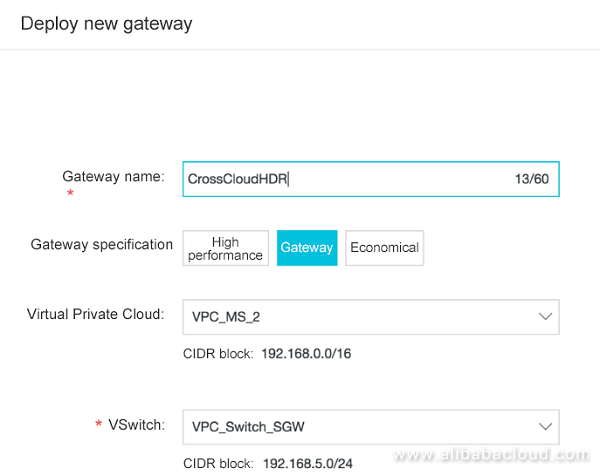
Deployment of the disaster recovery gateway
Generally, it takes approximately 30 minutes to deploy the gateway. A successfully deployed disaster recovery gateway is shown as follows. Unknown status indicates that this gateway has not been configured yet.

Completion of deployment
Note: Although the creation and configuration of the Hybrid Backup Recovery gateway are completed in one step, your ECS host list of this region will have two new ECS hosts, with one serving as the controller (MC) and the other as a gateway (Store).

Hybrid Backup Recovery ECS host
Click the gateway name to go to the management interface of the disaster recovery gateway. Enter your account's AK information (for the sake of safety, we suggest you use your subaccount to configure the disaster recovery gateway), and then click Submit.
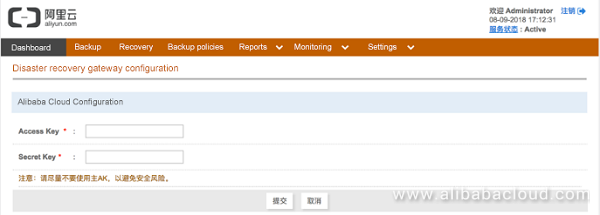
Disaster recovery gateway home page
Then you will see the Backup encryption configuration option, and decide whether or not to encrypt the backed-up data. Hybrid Backup Recovery uses the AES256 cryptographic algorithm to ensure absolute security for data stored in the disaster recovery gateway. You can decide whether or not to turn on the encryption based on the features of your business. I will use the default Off status and then submit.
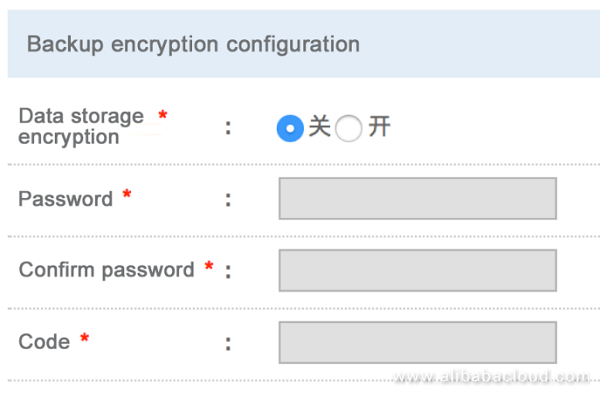
Backup encryption configuration
After submitting the configuration, you will be directed to the Hybrid Backup Recovery gateway management home page. On the home page, you can not only easily configure backup and recovery jobs, but also intuitively check and monitor the real-time status of each job. Now, the status of the disaster recovery gateway changes to Running normally.
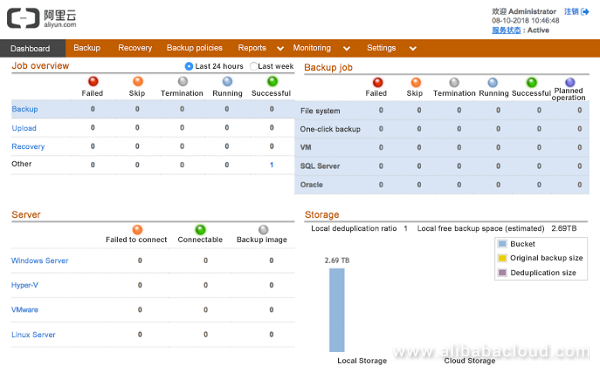
Disaster tolerance gateway home page
Let's get back to cloud vendor T's console. We can create two virtual machines based on the image files of the Hybrid Backup Recovery controller and gateway provided by Hybrid Backup Recovery: the host of the controller runs on the Windows 2012 R2 64-bit system, 2-core CPU, 4 GB MEM, and uses a 128 GB SSD cloud disk as the system disk; while the gateway host runs on the Ubuntu 14.04 64-bit system, 4-core CPU, 8 GB MEM, and uses a 128 GB SSD cloud disk as the system disk, and a 500 GB SSD cloud disk as the data disk. For procedure of importing the image file and creating a cloud host based on the image file, refer to the relevant steps in "Cloud Storage Gateway-based cross-cloud replication". The cloud hosts we created are as follows:

Disaster recovery gateway internally deployed by cloud vendor T
After completing the deployment, you will be able to directly enter the IP address of your controller host (Windows host) in your browser, then you will see the same disaster recovery gateway interface as we configured earlier. The steps are similar, and you need to provide your Alibaba Cloud account's AK, the account and password of the gateway, etc. This part is omitted here.
After completing the configuration, enter again, and you will be able to see the logon interface of the disaster recovery gateway (offline) deployed internally by cloud vendor T. Logon steps for the online gateway and the offline gateway created on Alibaba Cloud are different. Alibaba Cloud console has already integrated the auto-logon function. You can log on to the disaster recovery gateway without entering your username and password. Enter the username and password to log on.
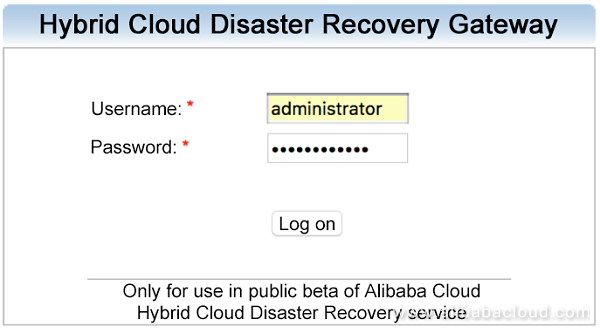
Disaster recovery gateway logon interface
After logging on, you will see exactly the same disaster recovery gateway home page as that of the online version.
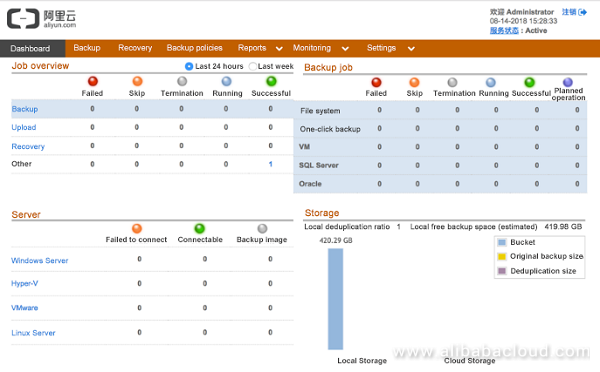
Home page of the disaster recovery gateway deploy internally by cloud vendor T
Next, connect the disaster recovery gateway to the Oracle server, and back up the database host to the cloud disaster recovery warehouse using the disaster recovery gateway. First, let's take a look at the information and content of data tables in the Oracle database. Using the following query, we can see there are 971 user tables in the Oracle database, as well as the size of each data file. Pay attention to the host name of the Oracle server. We found that the host names of some cloud vendors may start with numbers, which may cause a failure when creating ECS instances while failing over to Alibaba Cloud ECS. Alibaba Cloud's cloud host name must comply with the following rules: must contain [2, 128] English or Chinese characters; must start with a upper/lower case letter or a Chinese character; must not start with http:// and https://; and may contain numbers, half-width colons, underscores (_) or hyphens (-).

Total number of Oracle data tables
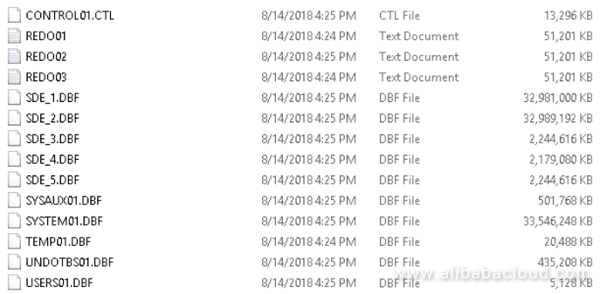
Oracle data file size
Before backing up the Oracle host, execute the precheck script to check whether the Oracle host configuration meets the preconditions for backup. You can modify and configure the environment based on the execution results of the script, to meet preconditions for Hybrid Backup Recovery backup.
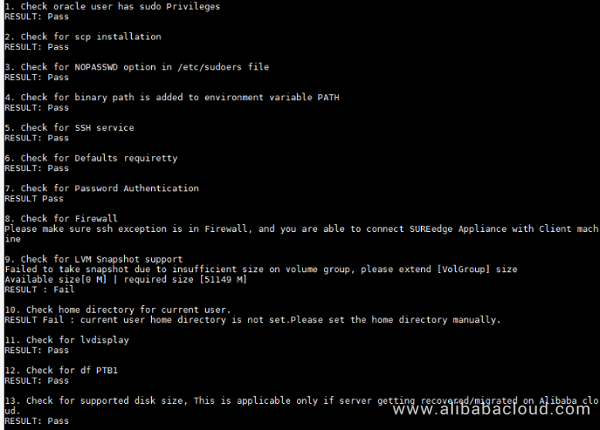
precheck script execution
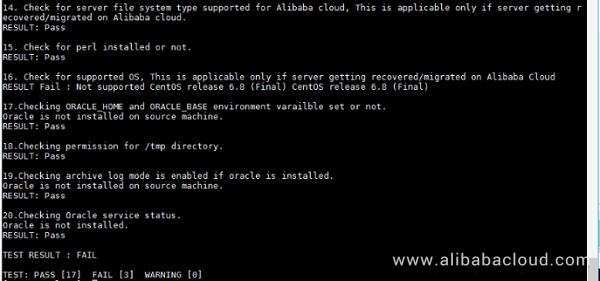
precheck execution results
Let's back up this Oracle host. Return to the management home page of cloud vendor T's disaster recovery gateway. Choose Back up.

Disaster recovery gateway backup
On the Protect Server page, choose the host type. Then enter the server IP address and the server's username and password. In this case, we chose Windows server. Note that the server IP address should be the intranet IP address of the Oracle host. This provides high-bandwidth intranet for the backup and recovery traffic.
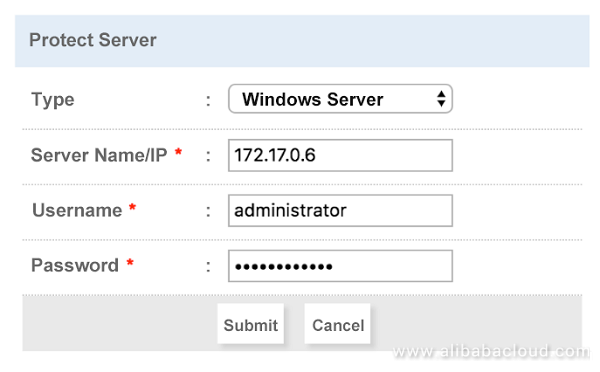
Configuration of Protect Server
After clicking Submit, we can check the progress by choosing Monitoring > Jobs. It takes a few minutes to compete a newly added job. You can click Job details, or the i icon, in the Operation bar to view job details.

Add the Protect Server job
Detailed information of the successfully added job is shown as follows. The status of each step is OK. If the job fails, an error message will be displayed on this page. You can handle the error at your discretion, or seek help from Hybrid Backup Recovery engineers.
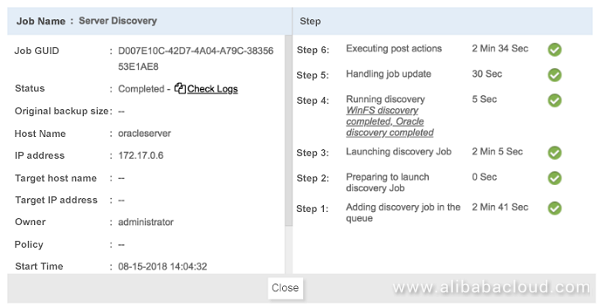
Job details
Close Job details. We can view the newly added Oracle server to be protected on the Backup page. We can see that all of this host's information has been retrieved by the disaster recovery gateway, such as the disk data and the Oracle database data. We can perform different backup operations based on this information.

Oracle host disk information

Oracle host database data
Before starting the backup, we must create a backup policy in Backup Policies. The most important role of the backup policy is to define the backup schedule. In addition, Enable cloud replication must be selected. Otherwise, the backup data will only be stored locally at the gateway, and will not be uploaded to the cloud disaster recovery warehouse. The number of days of Local copy and Cloud replication indicates the number of days that the data will be kept locally and on the cloud. Click Save.
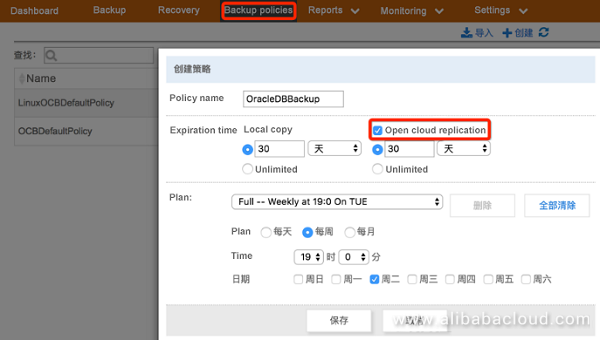
Creating a backup policy
After saving the policy, go to the Backup page. Click Plan (floppy disk icon) to create a backup plan. We need to bind a backup policy for a backup plan. Let's use the policy that we created in the previous step. Then click Save. We can combine different backup policies, for example combining full backup and incremental/differential backup to make a reasonable backup plan that has a small RTO. We suggest you perform a full backup every week, and appropriately perform incremental or differential backup everyday based on the characteristics of your applications. Backup latency interval defines the time interval between two backups. If a backup operation is still in progress when we start a new backup, the new backup operation will be skipped.
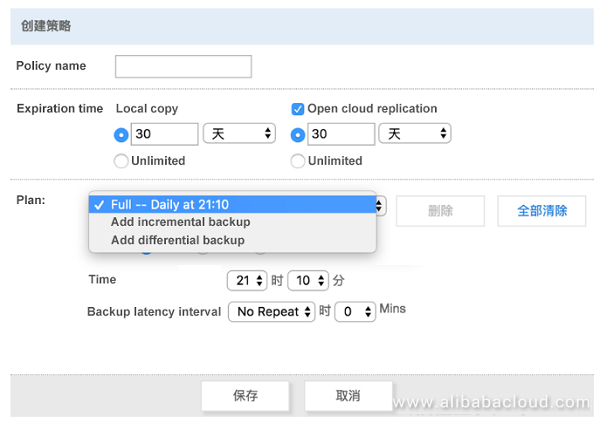
Backup policy combination
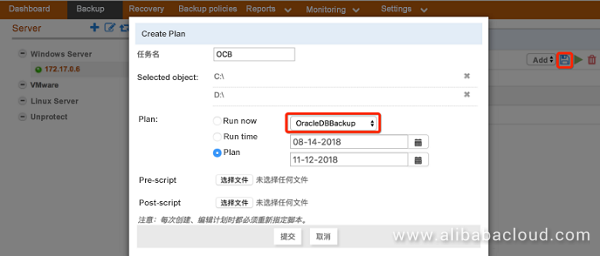
Creating a plan
After submitting the plan, we can click the Run Now icon to start the first backup.

Run Now
The backup type for the first backup is Full, which means full backup. After we click Submit, the full backup job will be executed.
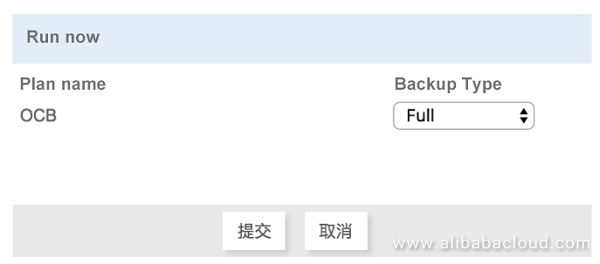
Click Submit to immediately run the backup job
We can go to Monitoring > Jobs to view the execution details of the backup job.
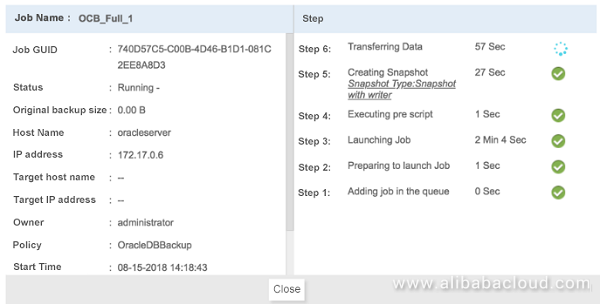
Backup details
We can also see that the backup job is running in the Dashboard.
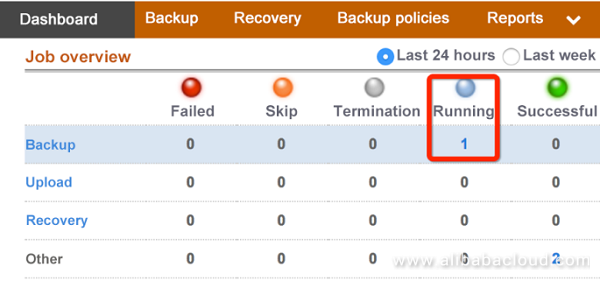
Dashboard information
Shortly after the backup starts, data transfer will start. Now, go to Task Manager > Performance of the Oracle host to view the speed of uploading the backup data to the gateway. As shown in the following picture, the upload speed is about 800 Mbps, or 100 MB/s. This matches the read performance ofDisk 1 (D drive) (105 MB/s).
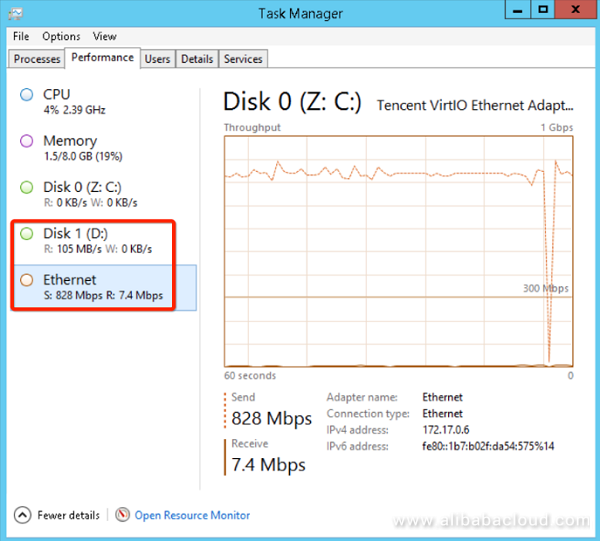
Oracle host upload performance
A few moments later, we can see from the following backup job details that backing up 148.4 GB of data took 36 minutes and 29 seconds, and the average speed is 69.42 MB/s.
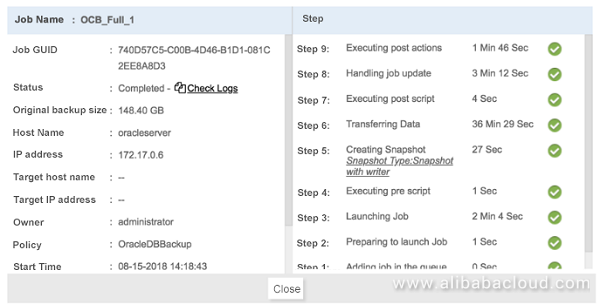
Backup job details
Return to the Dashboard. We can see it from the storage information that the 148.4 GB raw backup data occupies 130.36 GB space in local storage. That's because the Hybrid Backup Recovery gateway has removed duplicate data during the upload process. Deduplication not only saves the gateway storage space and improves the backup efficiency, but also improves the efficiency of uploading the backup data to Alibaba Cloud via the Internet.
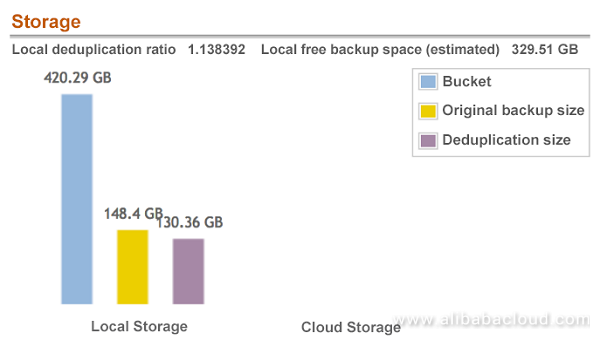
Backup space occupation
Now, you must have noticed that there is still no data in Cloud Storage. In fact, after the backup data has been completely uploaded to the disaster recovery gateway, the corresponding Upload job (to the Cloud Storage) is automatically created and executed.
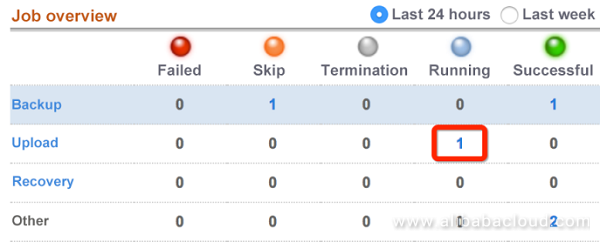
Uploading backup data to the cloud disaster recovery warehouse
Click the upload job, then we will be redirected to the upload jobs list. You can also view the upload progress and details here.

Upload job
From the Monitoring tab of the cloud host, we can view the performance of upload data from the backup gateway to Alibaba Cloud's cloud disaster recovery warehouse. Currently, the instantaneous upload speed is 100 Mbps, or 12.5 MB/s.

Upload performance
After the upload is complete, we can view the uploaded data and the total duration of the upload in Job details. This upload took 3 hours 11 minutes and 20 seconds, and the average upload speed was 13.24 MB/s.
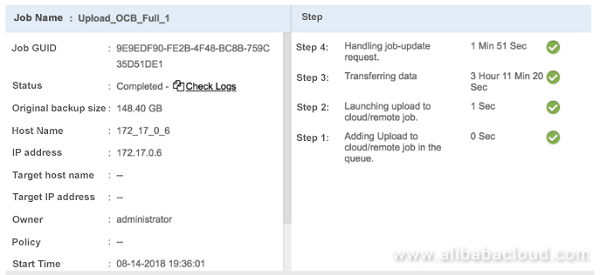
Upload job details
Now, the dashboard shows one successful upload and information relevant to the occupied cloud storage space.
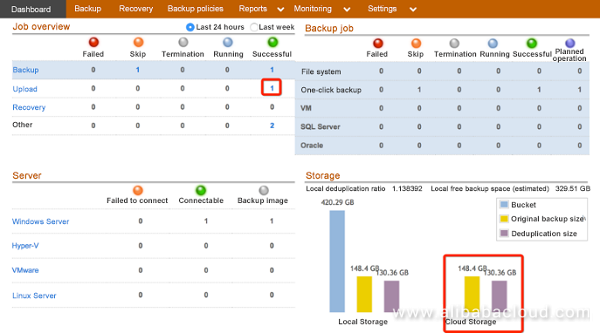
Successful upload and cloud storage space
You can log on to Alibaba Cloud console, and go to the Hybrid Backup Recovery page. On the Overview page, we can see one protected server and one protected database. This was automatically recognized by Alibaba Cloud's disaster recovery gateway after we uploaded the backup data to the cloud disaster recovery warehouse.
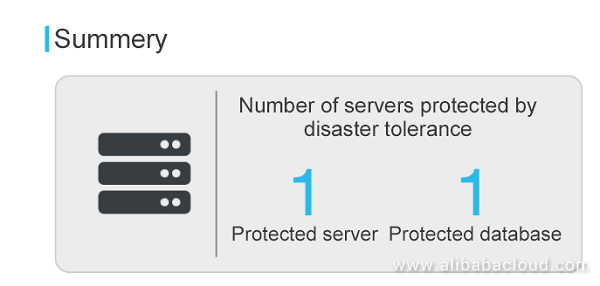
Hybrid Backup Recovery summary page
Go to the Disaster Tolerance Center > Protected Servers, to view the detailed information of the protected host.

Protected server
Open Alibaba Cloud's disaster recovery gateway, we can see that Cloud Storage shows the same storage size as the gateway of cloud vendor T. So far, the link that successively connects cloud vendor T's Oracle server, cloud vendor T's disaster recovery gateway, Alibaba Cloud's disaster recovery warehouse, and Alibaba Cloud's disaster recovery gateway has been established. If you want to fail over the protected server from the disaster recovery warehouse to Alibaba Cloud's ECS host, you can directly use Alibaba Cloud's disaster recovery gateway; if you want to fail back the protected server to cloud vendor T's Oracle server, you can simply use the disaster recovery gateway deployed internally by cloud vendor T. Notes: First, the local storage is 2.69 TB. You must remember that when we create the Alibaba Cloud disaster recovery gateway, a MC host and a Store host will be automatically created. The store host is provided with three 1 TB cloud disks. The 2.69 TB space comes from these three cloud disks. Secondly, the local storage space is not used. That's because Alibaba Cloud's disaster recovery gateway did not actually pull the protected data from the cloud disaster recovery warehouse to local storage.
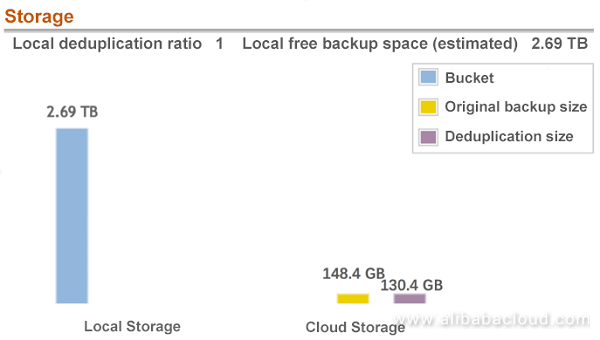
Alibaba Cloud disaster recovery gateway's storage space
Now, we choose to fail over the protected data from the cloud disaster recovery warehouse to an Alibaba Cloud ECS instance. This is implemented on Alibaba Cloud's disaster recovery gateway page. Go to the Server Recovery page. We can find the protected Windows server in the cloud disaster recovery warehouse, which is the Oracle server of cloud vendor T. Attention: Font colors of backups on the list can be used to differentiate different backup statuses. For example, the font color of this backup is blue, it indicates that the backup data is on the cloud. Specifically, the blue color indicates that the backup data is only stored in the cloud disaster recovery warehouse; the green color indicates that the data is stored both locally and in the cloud disaster recovery warehouse; while the black color indicates that the backup data is only stored locally.
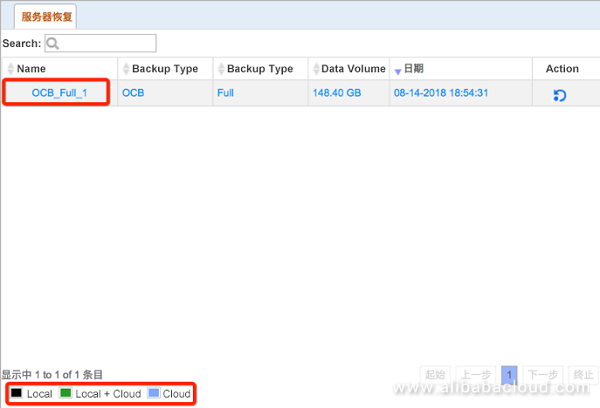
Server Recovery page
Click the Recovery icon in the Operation bar of the Server Recovery page. There are some fields to be entered on the Recovery Configuration page, such as the instance type, disk type, and VPC network. Because the Oracle server we created is 4-core CPU and 8GB MEM, we will choose ecs.hfc5.xlarge. Click Submit after verifying all fields have been correctly entered. Note that if cloud vendor T's private IP address is different from Alibaba Cloud's VPC IP address, we need to select Enter private IP address and specify the private IP address.
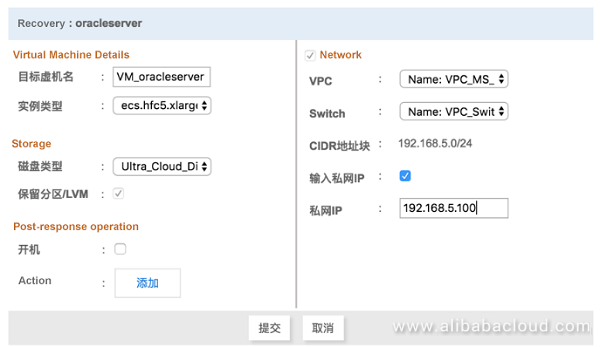
Recovery configuration page
After submitting the recovery job, we can find this recovery job by choosing Monitoring > Jobs. Likewise, we can view the recovery job details.

Recovery configuration page
After submitting the recovery job, we can find this recovery job by choosing Monitoring > Jobs. Likewise, we can view the recovery job details.
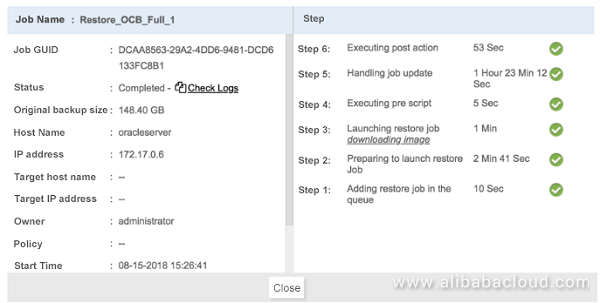
Recovery job details
From the above job details, we can see that the recovery has already been completed. Now, the Hybrid Backup Recovery gateway will automatically create an ECS instance in the current region, which is Shanghai in this case. The content of the ECS instance will be identical to that of the protected Oracle host at the source end.

ECS host after recovery
Log on to this ECS host, which is a Windows host, to view the Oracle data files. The data files are identical to those at the source end, including the metadata such as file modification time. You can even check the files' MD5 values to verify.
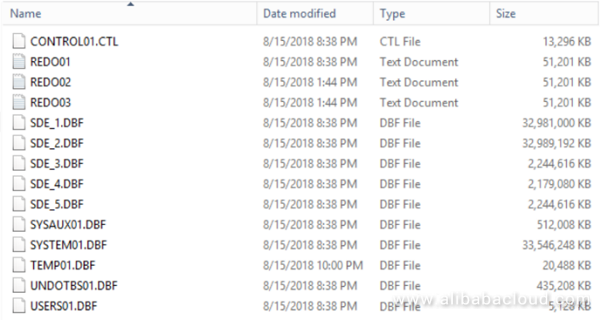
Recovered Oracle data files
Go to the Oracle server to check the table count, and see if it is the same as that of the source end. There are 156 tables, too. Of course, you can proceed with your business in the disaster recovery ECS host, and fail back from the disaster recovery ECS host to cloud vendor T's Oracle server after the disaster is recovered. This is indicated as Step 6 in the architecture diagram. The operation is similar and will not be demonstrated here.

The number of recovered Oracle tables
The backup scenario (backing up cloud vendor T's entire Oracle server to cloud vendor T's disaster recovery gateway, and then to Alibaba Cloud's disaster recovery warehouse) and the recovery scenario (recovering from the cloud disaster recovery warehouse to Alibaba Cloud's disaster recovery gateway, and automatically creating an ECS host that is identical to the Oracle host of cloud vendor T) perfectly verifies that Hybrid Backup Recovery achieves backup and recovery of applications and the entire host in cross-cloud/multi-cloud scenarios. The entire process is very simple. Hybrid Backup Recovery supports backing up and recovering the entire server and mainstream enterprise applications, such as all Oracle (support for Oracle RAC will be added shortly) and SQL Server versions. In addition, the advanced compression and deduplication service saves network bandwidth and space occupation during the backup process; the cloud disaster recovery warehouse supports resource distribution based actual needs and unlimited elastic scaling; the disaster recovery ECS instances generate no fees after they are shut down—minimizing your costs from multiple aspects. We have turned the expensive traditional disaster tolerance solution into an out-of-the-box service with 0 threshold, achieving Alibaba Cloud's goal to benefit all small and medium sized enterprises using cloud computing technologies.
We suggest you go to Alibaba Cloud console to activate Hybrid Backup Recovery, and use Alibaba Cloud's advanced technologies to protect your business.
We can aggregate Hybrid Cloud Storage Array, Cloud Storage Gateway, and Hybrid Backup Recovery into a cross-cloud disaster recovery (multi-cloud disaster tolerance/recovery) solution, providing a complete set of efficient cross-cloud disaster tolerance backup solutions for customers of third party cloud vendors. In the order of high to low RTOs, you can choose Hybrid Cloud Backup, Hybrid Cloud Storage Gateway, and Hybrid Backup Recovery based on your needs. Hybrid Cloud Backup and Hybrid Cloud Storage Gateway only support backing up and recovering files; while Hybrid Backup Recovery supports backing up and recovering files, applications, and the entire server.
Of course, we need to deploy some hosts and applications on a third-party cloud. The solution that delivers the lower RTO requires higher cost. However, as you can tell from the previous steps, the operation is still very simple, and the cost is far lower than that of traditional solutions. In order to maximize the backup performance and minimize your costs, we suggest that you configure the highest bandwidth and use the pay-as-you-go payment model for your server's network if it's deployed on a third-party cloud for cross-cloud disaster tolerance backup. These allow data from the source end to quickly reach the target end of backup, without significant cost increases for cross-cloud disaster tolerance backup.
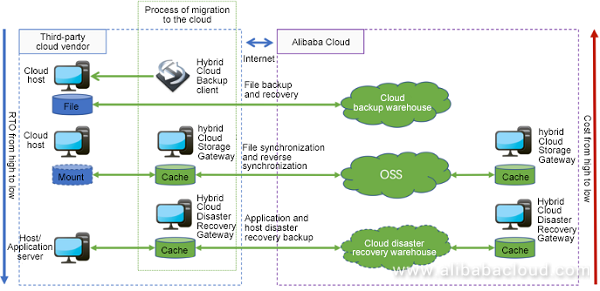
Diagram of hybrid cloud storage-based cross-cloud disaster tolerance backup
To learn more about Hybrid Backup Recovery, visit www.alibabacloud.com/product/hbr

57 posts | 12 followers
FollowAlibaba Cloud Storage - November 1, 2018
Alibaba Clouder - September 4, 2020
Alibaba Clouder - July 3, 2020
Alibaba Cloud Storage - October 31, 2018
Alibaba Clouder - January 31, 2019
Alibaba Clouder - July 6, 2020

57 posts | 12 followers
Follow Hybrid Cloud Storage
Hybrid Cloud Storage
A cost-effective, efficient and easy-to-manage hybrid cloud storage solution.
Learn More Cloud Backup
Cloud Backup
Cloud Backup is an easy-to-use and cost-effective online data management service.
Learn More Hybrid Cloud Solution
Hybrid Cloud Solution
Highly reliable and secure deployment solutions for enterprises to fully experience the unique benefits of the hybrid cloud
Learn More Hybrid Cloud Distributed Storage
Hybrid Cloud Distributed Storage
Provides scalable, distributed, and high-performance block storage and object storage services in a software-defined manner.
Learn MoreMore Posts by Alibaba Cloud Storage
Raja_KT February 11, 2019 at 4:19 am
Interesting to see file backup and recovery, file synchronization and reverse synchronization,application and host DR backup